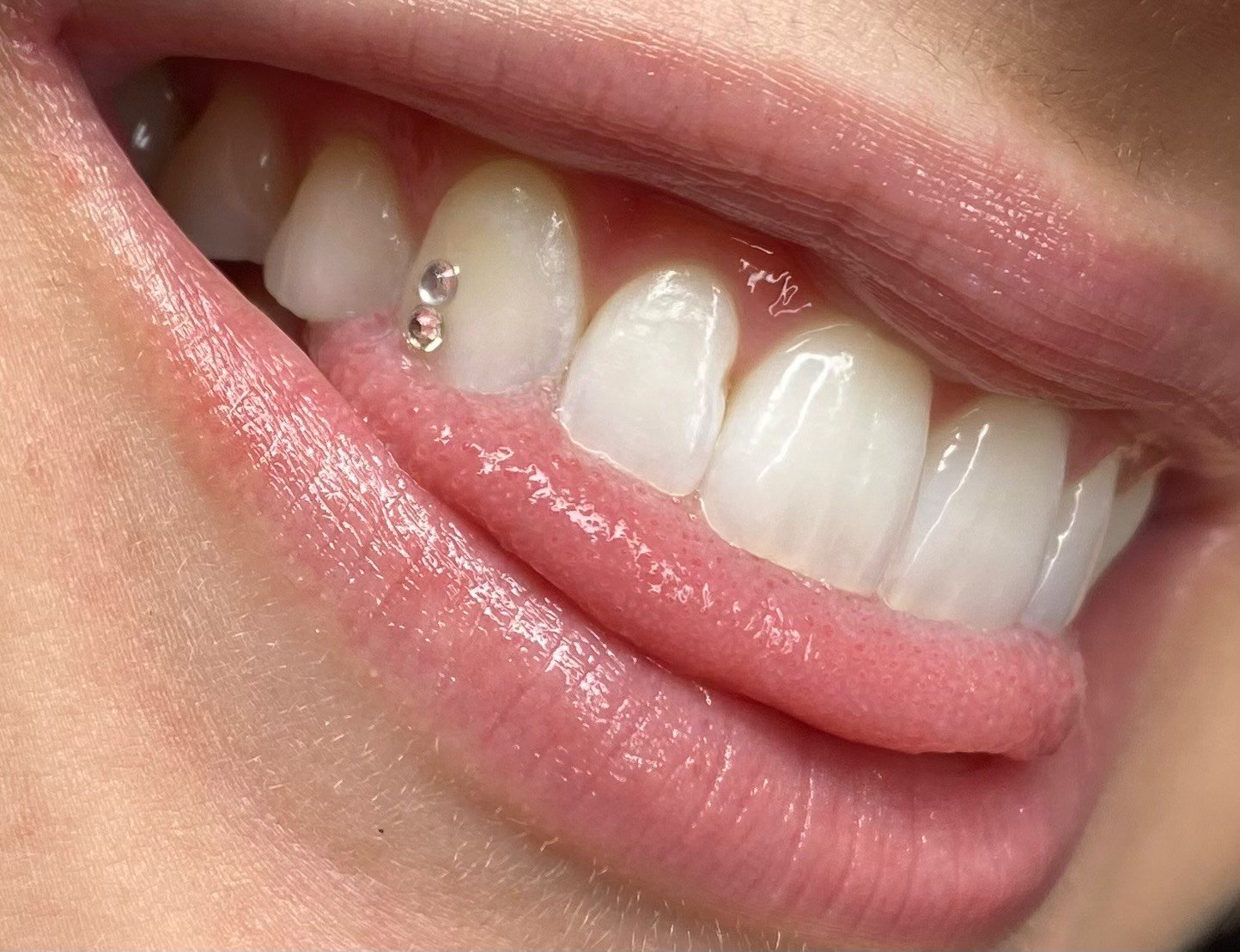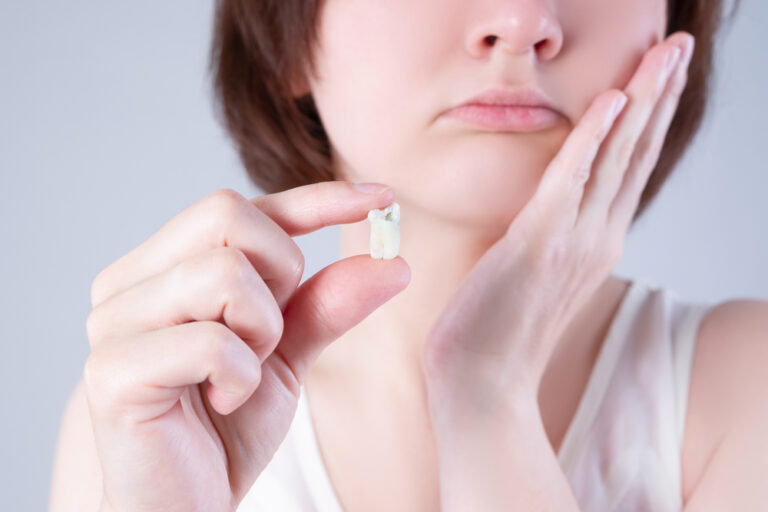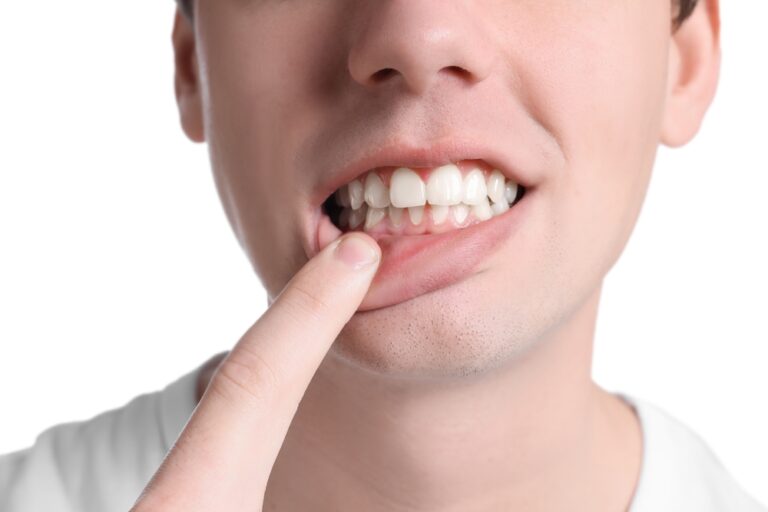Tooth gems, also known as tooth jewels or dental jewels, are small decorative gems or pieces of jewelry that are temporarily adhered to the teeth. They have become an increasingly popular fashion accessory over the past few years. But who can actually wear tooth gems safely and effectively? There are a few factors to consider when determining if tooth gems are right for you.
Types of Tooth Gems
Temporary Tooth Gems
Temporary tooth gems are applied with an adhesive that is designed to securely hold the gem in place for a day or two. The gems can be easily removed with dental floss or an instrument. Temporary gems come in shapes like hearts, stars, and circles. They are an affordable way to decorate your teeth for a short time, like a party or event.
Semi-Permanent Tooth Gems
Semi-permanent tooth gems use a stronger adhesive that lasts around 2 weeks on average. These gems are often made of gold, silver, or Swarovski crystals to give a sparkling look. An application and removal kit is used to avoid damaging the tooth. Semi-permanent gems are great for vacations or trying out a new style.
Permanent Tooth Gems
Permanent tooth gems are implanted into the tooth similarly to a dental filling. The gem is etched into the enamel and secured using a dental adhesive resin. Only a dentist can apply permanent tooth gems safely. They can last for years with proper oral hygiene but may eventually need to be replaced as your teeth shift. Permanent gems allow you to decorate your smile long-term.
Who Should Get Tooth Gems?
Tooth gems can be worn by many people when applied properly, but some factors may determine if tooth gems are a good choice for you:
Age
The American Dental Association recommends waiting until age 16 to get tooth gems since permanent teeth are mostly grown in by then. Teeth are still developing for pre-teens and some teens, so avoid adhering anything to growing teeth. Adults of any age can get tooth gems, as long as their teeth and gums are healthy.
Tooth and Gum Health
You’ll need healthy teeth and gums to temporarily apply anything to your teeth. Cavities, gum disease, chipped teeth, and other issues should be treated before getting tooth gems to avoid complications. Otherwise, the gems can fall off quickly. Wait until any oral health problems are resolved first.
Type of Teeth
Tooth gems adhere best to smooth, enamel surfaces. They may not stick as well to teeth with lots of pits and grooves. Be extra careful with application if you have molars with deep ridges or teeth that overlap. Don’t apply gems near restored areas like fillings.
Lifestyle and Job
Avoid tooth gems if your job involves public speaking or interpersonal interactions, as some workplaces prohibit them. Don’t get gems if you play sports with a mouthguard either. Tooth gems likely won’t withstand high-impact activities. Consider removing them for kissing, eating hard foods, or other friction-causing actions too.
Allergies and Sensitivities
The adhesives used for tooth gems vary. If you have oral allergies or sensitivities, certain adhesives may cause irritation or reactions. Do a small test application first. See your dentist if the gems bother your gums, teeth, or mouth over time.
Benefits of Tooth Gems

Decorating your teeth with gems has some advantages beyond just looking trendy. Possible benefits of tooth gems include:
- Self-expression – Tooth gems allow you to showcase your personal style. They can reflect your mood or personality.
- Confidence boost – Sparkling tooth gems can make you feel more confident and put together.
- Special occasion flair – Gems add glamour for weddings, parties, proms, concerts, and other events.
- Conversation starter – Tooth gems attract attention and give you something fun to talk about.
- Affordability – Temporary and semi-permanent gems are budget-friendly accessories.
- Low maintenance – Unlike a piercing, tooth gems don’t require much upkeep. Just practice good hygiene.
- Removability – If you don’t like the look after application, tooth gems can be easily taken off with no permanent effects.
- Durability – Permanent gems are etched right into the teeth for long-lasting wear.
Risks and Safety Tips for Tooth Gems
While tooth gems pose minimal risks for most wearers, you’ll want to take some safety precautions:
- See a dentist for semi-permanent or permanent tooth gems instead of doing it yourself. Improper application can damage teeth.
- Use only high-quality gems and adhesives designed specifically for dental use. Others may be unsafe.
- Follow all instructions carefully for at-home application of temporary gems. Place them correctly.
- Avoid getting temporary gems wet as moisture can make them fall off sooner.
- Check for gum irritation and increase oral hygiene while wearing gems.
- Don’t pick at gems with your fingernails as they can become unstuck and you risk swallowing them.
- See your dentist immediately if a gem falls off and you swallow it to avoid choking.
- Schedule regular dental cleanings and exams while wearing permanent gems. Tartar can still build up.
- Remove gems carefully to avoid chipping enamel or using too much force on your teeth.
Who Should Avoid Tooth Gems?
While tooth gems are suitable for many people, some individuals are better off not getting them applied, including:
- Children under 16 years old – Their teeth are still growing in.
- People with dental issues – Tooth gems won’t adhere well to damaged or unhealthy teeth.
- Those with metal allergies – Silver, gold, or other metals in gems may cause reactions.
- Individuals with oral irritations – Gems could worsen issues like canker sores.
- People with bruxism or TMJ – Tooth gems likely won’t last long due to excessive grinding.
- Those with autoimmune disorders – The bonding agents may increase infection risks.
- Pregnant women – Hormonal changes make gums more sensitive.
- Certain occupations – Jobs with food prep, public speaking, etc. may prohibit gems.
- Contact sport athletes – Gems could loosen and pose safety hazards.
- Anyone unable or unwilling to practice good oral hygiene – Gems raise your risk for plaque buildup, decay, and gum disease if not cleaned properly.
How Long Do Tooth Gems Last?
Tooth gems can last anywhere from a few hours to many years, depending on the type:
- Temporary: 1-3 days
- Semi-permanent: 2-4 weeks
- Permanent: 2 or more years (with good oral hygiene)
Factors like your oral pH, diligent cleaning habits, and lifestyle can lengthen or shorten how long tooth gems will adhere and look their best. Avoid applying too many layers of adhesive when reapplying temporary gems to prevent excess buildup. See your dentist promptly if a permanent gem falls off.
Professional Tooth Gem Application

While you can buy temporary tooth gems to apply on your own, getting semi-permanent or permanent tooth gems applied by a dentist is recommended. Here is the basic process:
- Cleaning – Your teeth are polished to remove plaque and debris.
- Selecting the gems – Size, shape, and material options are offered to customize your smile.
- Tooth preparation – For permanent gems, a small hollow is etched into the enamel with a dental drill.
- Gem placement – Tweezers are used to carefully position the gem(s) on prepared teeth.
- Bonding – A tooth-colored resin material seals and adheres gems to teeth. It is cured with UV light.
- Finishing – Gems are checked for secure placement and proper occlusion (bite).
- Follow up – Aftercare instructions are provided, and future checkups scheduled.
Seeing a professional ensures gems are applied safely without damage and fit your teeth properly. Most dentists can add tooth gems during a routine visit. Some specialize in cosmetic dentistry and have extensive gem, jewelry, and accessory options available.
Caring for Tooth Gems
Tooth gems require some extra care and maintenance while you wear them. Follow these tips to help your gems last longer and avoid complications:
- Brush around gems gently using a soft toothbrush. Take care not to pick at them.
- Floss very carefully between teeth with gems, wiggling the floss through instead of snapping for clearance.
- Avoid sticky, hard, and crunchy foods that could loosen gems, like caramel, ice, popcorn, nuts, etc.
- Rinse with water after eating and drinking anything other than water.
- Avoid mouthwash, as alcohol can deteriorate gem adhesive. Use an alcohol-free rinse if needed.
- See your dentist right away if you notice tooth sensitivity, damage, or loss of gems.
- Get teeth cleaned regularly to avoid buildup around gems that causes decay or gum disease.
- Refrain from habits like nail-biting, pen-chewing, and teeth grinding that stresses gems.
- Remove and reapply gems before the recommended wear time is up.
Proper oral hygiene and care protects your tooth gems so you can wear them safely and comfortably.
Removing Tooth Gems
Temporary and semi-permanent tooth gems will eventually fall off on their own as the adhesive wears off. You can also carefully remove them yourself or see your dentist for help taking them off.
Removing Temporary Gems
- Floss between teeth to loosen gems and gently pry up on the edges.
- Use an orangewood stick or toothpick to gently lift the gem off of teeth starting at the corners.
- Do not pick, pull, or scratch aggressively at temporary gems to avoid damaging teeth.
- Rinse off any remaining adhesive residue.
Removing Semi-Permanent Gems
- Schedule removal with your dentist within the recommended wear period.
- The dentist can use dental tools to safely pry up and remove semi-permanent gems.
- Remaining adhesive is polished away using a sandblaster or diamond-coated drill.
- Any tooth sensitivity or damage is also assessed at removal.
Only try to remove permanent tooth gems under your dentist’s direct supervision. The dental drill must be used to access the resin bond material securing the gem within your enamel. Overall, have a professional take off any painful, loose, or damaged tooth gems to avoid oral health risks.
Cost of Tooth Gems
The price of tooth gems varies greatly depending on the material, type, application method, and dentist fees. On average, you can expect to pay:
- Temporary: $5 – $20 per gem
- Semi-permanent: $15 – $75 per gem
- Permanent: $50 – $500 per gem
Solid gold, platinum, diamonds, and other precious metals or crystals cost more. Getting semi-permanent or permanent tooth gems applied by a cosmetic dentist averages $200 – $600 per visit. Most dental insurance doesn’t cover tooth gems since they are a cosmetic procedure. However, they can make excellent gifts!
Tooth Gems Dos and Don’ts

Here are some dos and don’ts to remember about tooth gems:
Do:
- See a dentist for semi-permanent or permanent gems
- Pick gem shapes and colors that complement your teeth
- Follow all oral care and removal instructions
- Get teeth cleaned regularly while wearing gems
- Remove gems before eating, sleeping, contact sports, etc.
- Rinse mouth after drinking anything besides water
- Brush and floss very gently around gems
Don’t:
- Apply gems to kids’ teeth before age 16
- Get gems if you have dental issues or oral sensitivities
- Pick at gems excessively with fingers or tools
- Let gems overstay recommended duration
- Use alcohol-based mouthwash while wearing gems
- Eat sticky, crunchy, or hard foods with gems on
- Ignore any tooth or gum pain
- Damage teeth trying to remove gems yourself
Following these simple guidelines helps ensure that tooth gems safely accent your smile without harming your oral health.
FAQ about Tooth Gems
1. Do tooth gems damage teeth?
Tooth gems don’t damage teeth when applied properly for the recommended duration. With improper use, permanent etching, or excessive force removing them, chips, cracks, or enamel loss is possible. See a professional to ensure gems are placed and removed safely.
2. How long do tooth gems last?
Temporary tooth gems last 1-3 days, semi-permanent last 2-4 weeks on average, and permanent (professionally bonded) gems last 2 or more years with proper care. Durability depends on the strength of the adhesive and how well you care for your oral health.
3. Can you eat with tooth gems on?
Avoid eating while wearing temporary or semi-permanent tooth gems. The pressure of chewing combined with food particles can loosen gems. At most, drink cool liquids gently. Permanent gems are more durable for eating, but you still have to be cautious with hard or sticky foods.
4. How do you take care of tooth gems?
Brush and floss very gently around tooth gems, rinsing after meals and drinks besides water. Avoid alcohol-based mouthwash and habits that put pressure on gems. See your dentist right away if any feel loose or fall out. Get regular dental cleanings and exams too.
5. How do you remove tooth gems?
Use floss to loosen temporary gems and gently lift off. See your dentist for semi-permanent removal with tools to pry them off and polish teeth smooth. Never try removing permanent gems yourself. Only dentists can safely take out permanently bonded gems when needed.
Tooth gems allow you to add some safe, temporary sparkle to your smile. When chosen and cared for properly, they can let anyone 16 and up express themselves without damaging their oral health. Consult your dentist if interested in semi-permanent or permanent tooth gems for a dazzling effect.






